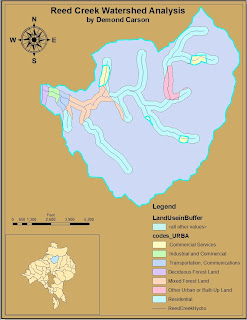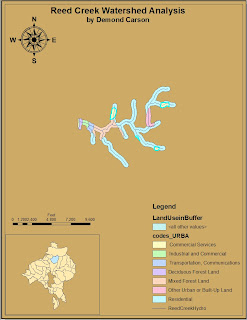

Here is my final project for the Reed Creek Watershed Analysis. At first I had a hard time, but with some help from my friend and teacher Pete "Rafting King" Kennedy, I was able to pull it together. My problem was that I was over analyzing everything. After I learn to calm down and take it slow, things seem to come together. This was my first GIS class and it was different from what I have taken in the past, but I enjoyed every minute of this experience. So to all the people who have take it or not, I believe you will enjoy this class and the teacher. On one more note, if you are curious about the class, try it, you only live once.
Peace


























